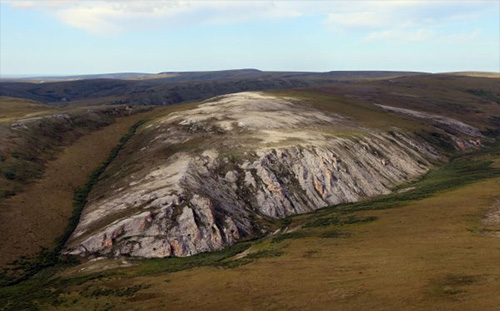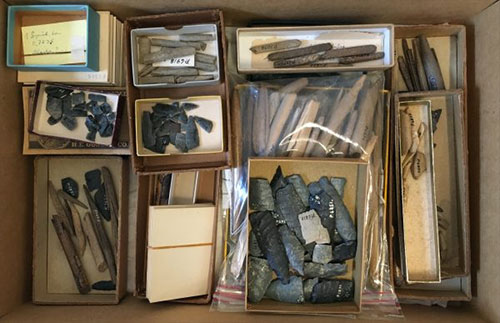
Ancient child’s tooth reveals picture of Alaska’s early inhabitantsBy JEFF RICHARDSON
November 09, 2018
The tooth is only the third known remnant of a population of early migrants known as Ancient Beringians. Combined with previous University of Alaska Fairbanks research, the find indicates that Ancient Beringians remained in Alaska for thousands of years after first migrating across the Bering Land Bridge that connected eastern Asia and Alaska.
Investigation of the tooth, conducted by researchers at UAF and the National Park Service in Alaska, was part of a larger paper published Nov. 8 in the journal Science. That research included genetic analysis of 15 diverse bone samples from sites across North and South America, revealing a broad picture of how the Americas were populated by its earliest peoples. The Alaska tooth had been largely forgotten since it was excavated in 1949 by Danish archaeologists from the Trail Creek Caves site on Alaska's Seward Peninsula. For almost 70 years it remained in storage in Copenhagen, Denmark, until it was found in 2016 by Jeff Rasic, a Fairbanks-based NPS archaeologist who was conducting new analyses of this old collection. Radiocarbon dating determined the tooth, which belonged to a 1½-year-old child, is by far the oldest human specimen in the North American Arctic -- more than twice as old as the next oldest remains. Genomic testing connected the tooth to the Ancient Beringian lineage. The first traces of that population were discovered in 2013 by a team led by UAF professor Ben Potter at a site in Alaska's Interior. "This one small tooth is a treasure trove of information about Alaska's early populations, not only their genetic affinities but also their movements, interactions with other people and diet," said Rasic. When looked at together, those two sites -- separated by about 400 miles and 2,500 years -- show that Ancient Beringians were present across the vast expanse of Alaska for millennia.
"This new find confirms our predictions that Ancient Beringians are directly linked with the cultural group known as the Denali Complex, which was widespread in Alaska and the Yukon Territory from 12,500 to about 6000 years ago," said Potter, who wasn't involved in the Science paper. Researchers worked with tribal officials from the Seward Peninsula village of Deering to coordinate efforts to study the tooth. Analysis at UAF's Alaska Stable Isotope Facility also revealed surprising details about the lives of the child and, by proxy, the mother who fed the child. By studying chemical signatures preserved in the tooth, ASIF Director Matthew Wooller was able to analyze their diet. "The child's food sources were entirely terrestrial, a sharp contrast with other sites that indicate inclusion of anadromous fish and marine resources." said Wooller, who also works at UAF's College of Fisheries and Ocean Science, and Water and Environmental Research Center. That land-based diet is a surprise -- during the time the child lived on the Seward Peninsula, sea levels had risen to nearly modern levels. Those rising waters had cut off the Bering Land Bridge and surrounded most of the peninsula, making marine resources accessible. Further isotope results and modeling, which were conducted by Rasic, Wooller and Clement Bataille from the University of Ottawa, also determined the family resided in the region surrounding the caves, and were not migrants from elsewhere in Alaska or Siberia. "The combination of isotope signatures found in the tooth is pretty specific to the interior Seward Peninsula, making a local origin for the family very probable," Bataille said.
On The Web:
|
||||||

